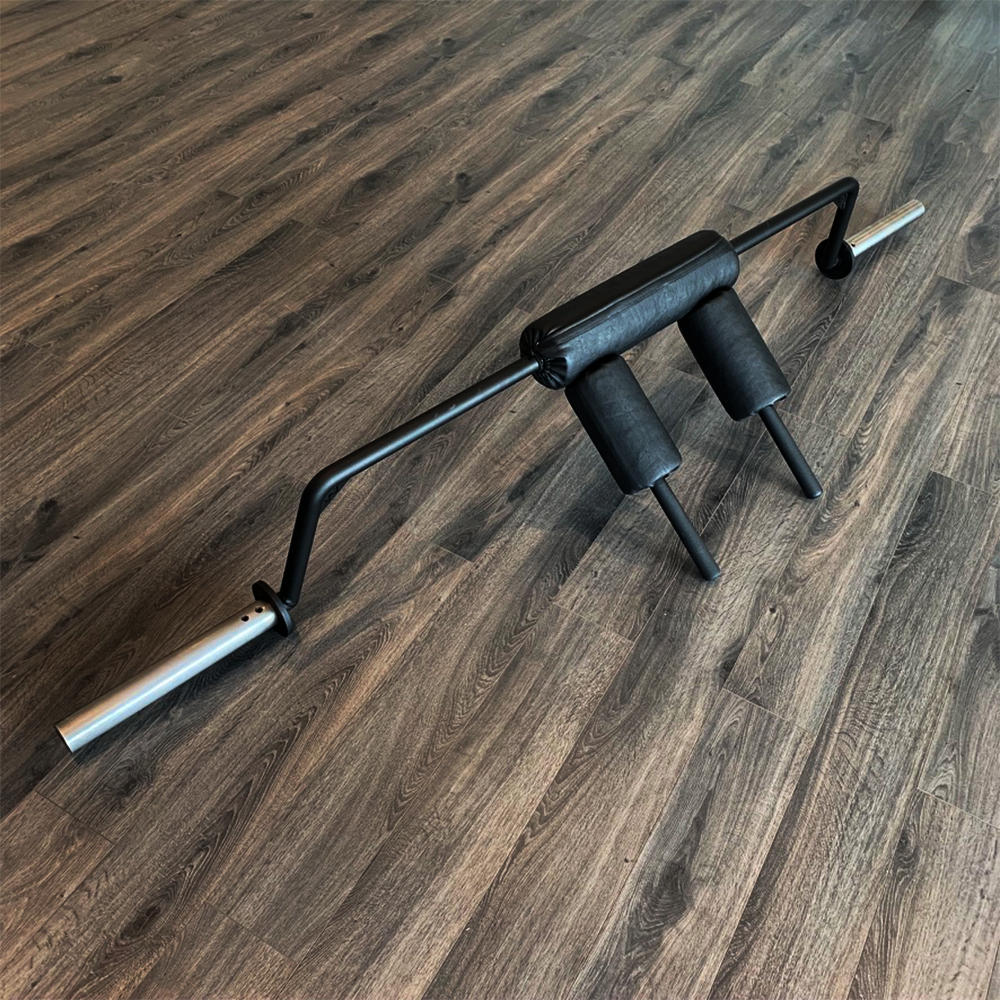Nationwide Sales & Service - 01536 802333
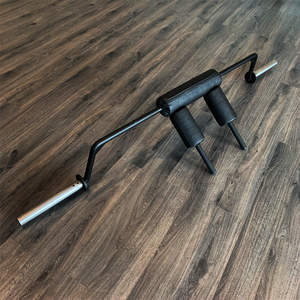
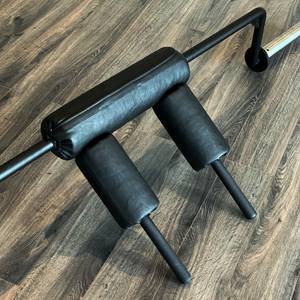
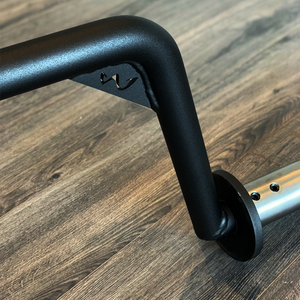
SKU: WN-SSBAR
The Watson Safety Squat Bar (also known as the Hatfield Bar) allows you to perform all types of squat movements in much more comfort than with a traditional straight bar. and is without a doubt, this is the highest quality Safety Squat Bar on the market today.
Available from stock for very fast delivery.....
Handles at the front of the bar reduce shoulder strain and the design of the Safety Squat Bar allows you to let go completely of the bar and it will stay securely positioned with the load spread comfortably over the 3 pads.
The Watson Safety Squat Bar is constructed from 30mm solid high-tensile steel and will fit an olympic Power Rack.
Works really well for performing standing calf raises from a Calf Raise Block – the hands are free to hold onto something for balance.
SQUATTING – WITH A NEW TWIST
Every once in a while, something new comes along that is revolutionary, earth-shattering.
Powerful long Quote from Simon Watson who designed and used it to underpin this style of bar and clearly this BAR.
"Hold on, Dr. Squat! you say. What’s wrong with squats? You have always touted squats as state-of-the-art when it came to leg training. True, I have indeed. But always with the admonishment that squats must be done correctly. To work best – with the utmost safety and effectiveness – squats must be done with an upright torso, with knees extending over the feet in order to maximally isolate the quads, and to a position just short of rock-bottom to ensure adaptive response in the tissues comprising the knee. Power lifters, of course, turn to the more effective technique of spreading the stress to the hips, hams, back, and quads when it comes time to enter contests. But even the most scientific power lifters train with an upright torso during the off-season. And athletes of every persuasion do squats as described above. Squats are, after all, the single most effective leg exercise ever conceived, whether your training goals are those of a bodybuilder, power athlete, endurance athlete, or fitness freak.
So, what’s this about a new innovation?
Quite appropriately, and perhaps for lack of a better name, its inventor calls is the Safety Squat Bar. Jesse Hoagland may not be a name any of you know. But those athletes who have used this bar are not likely to forget it. Many of them with knee problems or bad backs were doomed to try competing in their sport without the benefit of squats. His new bar gave them a new lease on their respective athletic careers. Personally, I began using the Safety Squat Bar exclusively in my training about six years ago. I went from an all-time best of 920 pounds to an official 970, then to a lift of 1,014 pounds in Hawaii a few months ago. I can clearly see 1,100 in the near future.
I credit this amazing bar for that.
Let’s take it from the top. What exactly is this new bar, and what’s so great about it that makes it both more effective as well as safer than the conventional straight bar?
The conventional straight bar has several inherent weaknesses or dangers:
Despite these problems, all of us have learned to put up with them and get on with the business of learning good technique, taking proper precautions, and doing what we knew was best for us. We squat no matter what, because it was best to do so. That we got by and made small progress with conventional squats is due in no small measure to our belief that squats worked best, and we made them part of our program.
Now listen carefully – I am sometimes accused of making overt statements, but this time it’s warranted. Read the list of problems again. None of these problems arise with the safety squat bar. The truly great thing about it is that because of the elimination of these inherent problems with conventional squatting, you will realize faster gains, less strain and stress on your back, knees, and other joints, fewer potentially devastating misses under heavy iron, and in general a more enjoyable workout. The exquisite isolation the Safety Squat Bar provides for your quads will be a truly unique experience, I assure you.
Let’s go over the points outlined above one by one.
The hands are not holding the bar allowing you to grasp the handles on the power rack. Because of the heavy loads involved in squatting when returning to the upright position, there is tendency to round the back and place unnecessary stress on your lower back. This is now avoided by exerting pressure against the power rack handles and thus maintaining a perfectly straight back throughout the entire squatting motion.
The use of the hands also prevents the trainee from falling forward or backward. During the squatting motion the resistance varies from one point of the lift to another. When you start up from the low position (thighs parallel to the floor) you need a lot of resistance. As you move out of the squat, your strength decreases, therefore you can handle less resistance. When you reach your sticking point, the resistance must be at its lowest. When the sticking point is passed, your strength increases and therefore you can handle more weight. By carefully analyzing this range of motion and resistance changes, you immediately realize that in using the conventional squatting bar the trainee is forced to use a load that can be handled in the weakest position. This results in using an inadequate amount of weight in the strongest position of the squatting motion. This problem is solved by use of the hands with the Safety Squat Bar. When the muscles are overloaded and the sticking point is reached, the hands can be used to help you through the weak points of the squatting motion. This unique feature allows you to work with the heavier weights when you are strongest and gives you help when you are weakest. You are exerting near maximum effort through the entire range of motion.
The padded yolk that the Safety Squat Bar is equipped with virtually eliminates neck discomfort.
And the fact you need not use you hands to hold the bar on your shoulders eliminates wrist, shoulder, elbow, or shoulder girdle discomfort.
Using your hands to assist has some benefits beyond allowing greater loads to be handled. You can also regulate your position – that is, your posture under the bar can be adapted to suit your own anatomical peculiarities so that you can literally tailor your squatting style to afford maximum overload and consequently muscular development.
There is a five inch camber at both ends of the bar. When weight is placed on the ends of the bar, the two stems of the shoulder yolk hang downward. As you approach the bar, you slip your head under the yolk stems and rotate them upward and forward. Doing this also causes the weights to rotate upward and forward. Once on your shoulders, and standing upright, the weighted ends of the bar cause the yolk stems to press downward onto your shoulders, thereby holding the bar securely in place, and placing you hands free to either hold the handles of the squat rack or simply hang to your sides, on your thighs, or on the ends of the yolk stems. Most important, however, is the fact that now the weighted ends of the bar are perfectly aligned with your body’s center of gravity. Conventional squatting placed the weight right behind you, fully four or five inches behind your body’s midline. That caused you to lean forward for balance. With the Safety Squat Bar, the weight is distributed directly in line with your body’s midline, and completely eliminates the need – indeed, the ability, to lean forward. Your back problems, and knee problems are a thing of the past.
Now you can squat again, safely, effectively, and quite probably with bigger weights than before. And that amounts to better progress toward your training goals! "
Specification
2250 mm x 550 mm
Weight: 30kg

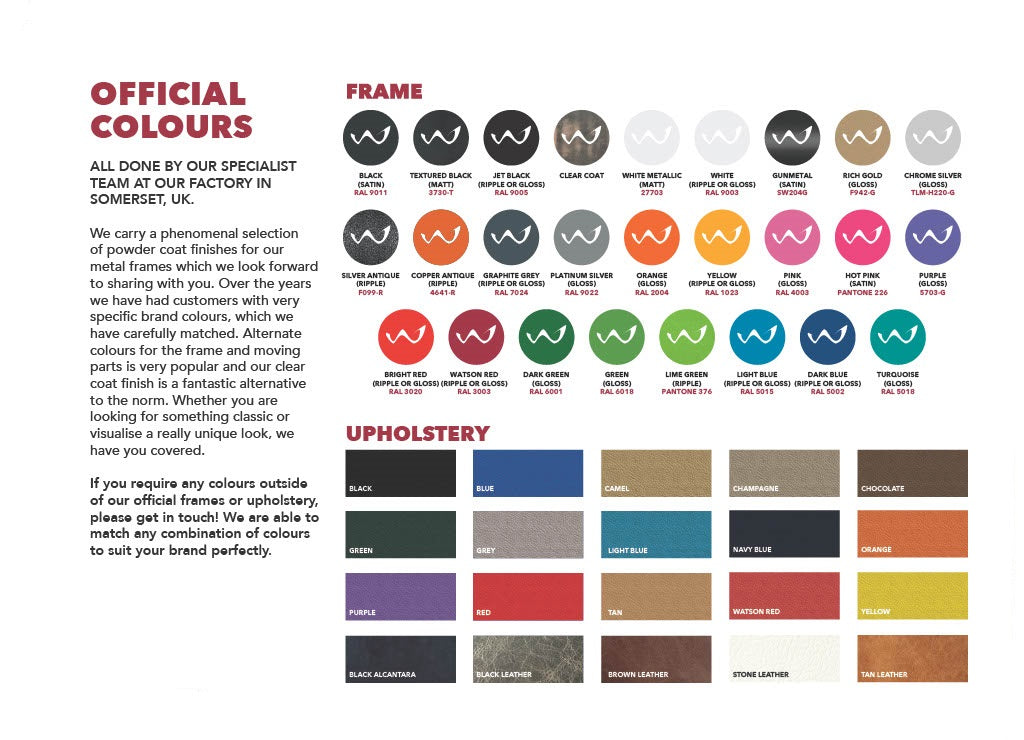
The Watson Safety Squat Bar (also known as the Hatfield Bar) allows you to perform all types of squat movements in much more comfort than with a traditional straight bar. and is without a doubt, this is the highest quality Safety Squat Bar on the market today.
Available from stock for very fast delivery.....
Handles at the front of the bar reduce shoulder strain and the design of the Safety Squat Bar allows you to let go completely of the bar and it will stay securely positioned with the load spread comfortably over the 3 pads.
The Watson Safety Squat Bar is constructed from 30mm solid high-tensile steel and will fit an olympic Power Rack.
Works really well for performing standing calf raises from a Calf Raise Block – the hands are free to hold onto something for balance.
SQUATTING – WITH A NEW TWIST
Every once in a while, something new comes along that is revolutionary, earth-shattering.
Powerful long Quote from Simon Watson who designed and used it to underpin this style of bar and clearly this BAR.
"Hold on, Dr. Squat! you say. What’s wrong with squats? You have always touted squats as state-of-the-art when it came to leg training. True, I have indeed. But always with the admonishment that squats must be done correctly. To work best – with the utmost safety and effectiveness – squats must be done with an upright torso, with knees extending over the feet in order to maximally isolate the quads, and to a position just short of rock-bottom to ensure adaptive response in the tissues comprising the knee. Power lifters, of course, turn to the more effective technique of spreading the stress to the hips, hams, back, and quads when it comes time to enter contests. But even the most scientific power lifters train with an upright torso during the off-season. And athletes of every persuasion do squats as described above. Squats are, after all, the single most effective leg exercise ever conceived, whether your training goals are those of a bodybuilder, power athlete, endurance athlete, or fitness freak.
So, what’s this about a new innovation?
Quite appropriately, and perhaps for lack of a better name, its inventor calls is the Safety Squat Bar. Jesse Hoagland may not be a name any of you know. But those athletes who have used this bar are not likely to forget it. Many of them with knee problems or bad backs were doomed to try competing in their sport without the benefit of squats. His new bar gave them a new lease on their respective athletic careers. Personally, I began using the Safety Squat Bar exclusively in my training about six years ago. I went from an all-time best of 920 pounds to an official 970, then to a lift of 1,014 pounds in Hawaii a few months ago. I can clearly see 1,100 in the near future.
I credit this amazing bar for that.
Let’s take it from the top. What exactly is this new bar, and what’s so great about it that makes it both more effective as well as safer than the conventional straight bar?
The conventional straight bar has several inherent weaknesses or dangers:
Despite these problems, all of us have learned to put up with them and get on with the business of learning good technique, taking proper precautions, and doing what we knew was best for us. We squat no matter what, because it was best to do so. That we got by and made small progress with conventional squats is due in no small measure to our belief that squats worked best, and we made them part of our program.
Now listen carefully – I am sometimes accused of making overt statements, but this time it’s warranted. Read the list of problems again. None of these problems arise with the safety squat bar. The truly great thing about it is that because of the elimination of these inherent problems with conventional squatting, you will realize faster gains, less strain and stress on your back, knees, and other joints, fewer potentially devastating misses under heavy iron, and in general a more enjoyable workout. The exquisite isolation the Safety Squat Bar provides for your quads will be a truly unique experience, I assure you.
Let’s go over the points outlined above one by one.
The hands are not holding the bar allowing you to grasp the handles on the power rack. Because of the heavy loads involved in squatting when returning to the upright position, there is tendency to round the back and place unnecessary stress on your lower back. This is now avoided by exerting pressure against the power rack handles and thus maintaining a perfectly straight back throughout the entire squatting motion.
The use of the hands also prevents the trainee from falling forward or backward. During the squatting motion the resistance varies from one point of the lift to another. When you start up from the low position (thighs parallel to the floor) you need a lot of resistance. As you move out of the squat, your strength decreases, therefore you can handle less resistance. When you reach your sticking point, the resistance must be at its lowest. When the sticking point is passed, your strength increases and therefore you can handle more weight. By carefully analyzing this range of motion and resistance changes, you immediately realize that in using the conventional squatting bar the trainee is forced to use a load that can be handled in the weakest position. This results in using an inadequate amount of weight in the strongest position of the squatting motion. This problem is solved by use of the hands with the Safety Squat Bar. When the muscles are overloaded and the sticking point is reached, the hands can be used to help you through the weak points of the squatting motion. This unique feature allows you to work with the heavier weights when you are strongest and gives you help when you are weakest. You are exerting near maximum effort through the entire range of motion.
The padded yolk that the Safety Squat Bar is equipped with virtually eliminates neck discomfort.
And the fact you need not use you hands to hold the bar on your shoulders eliminates wrist, shoulder, elbow, or shoulder girdle discomfort.
Using your hands to assist has some benefits beyond allowing greater loads to be handled. You can also regulate your position – that is, your posture under the bar can be adapted to suit your own anatomical peculiarities so that you can literally tailor your squatting style to afford maximum overload and consequently muscular development.
There is a five inch camber at both ends of the bar. When weight is placed on the ends of the bar, the two stems of the shoulder yolk hang downward. As you approach the bar, you slip your head under the yolk stems and rotate them upward and forward. Doing this also causes the weights to rotate upward and forward. Once on your shoulders, and standing upright, the weighted ends of the bar cause the yolk stems to press downward onto your shoulders, thereby holding the bar securely in place, and placing you hands free to either hold the handles of the squat rack or simply hang to your sides, on your thighs, or on the ends of the yolk stems. Most important, however, is the fact that now the weighted ends of the bar are perfectly aligned with your body’s center of gravity. Conventional squatting placed the weight right behind you, fully four or five inches behind your body’s midline. That caused you to lean forward for balance. With the Safety Squat Bar, the weight is distributed directly in line with your body’s midline, and completely eliminates the need – indeed, the ability, to lean forward. Your back problems, and knee problems are a thing of the past.
Now you can squat again, safely, effectively, and quite probably with bigger weights than before. And that amounts to better progress toward your training goals! "
Specification
2250 mm x 550 mm
Weight: 30kg


